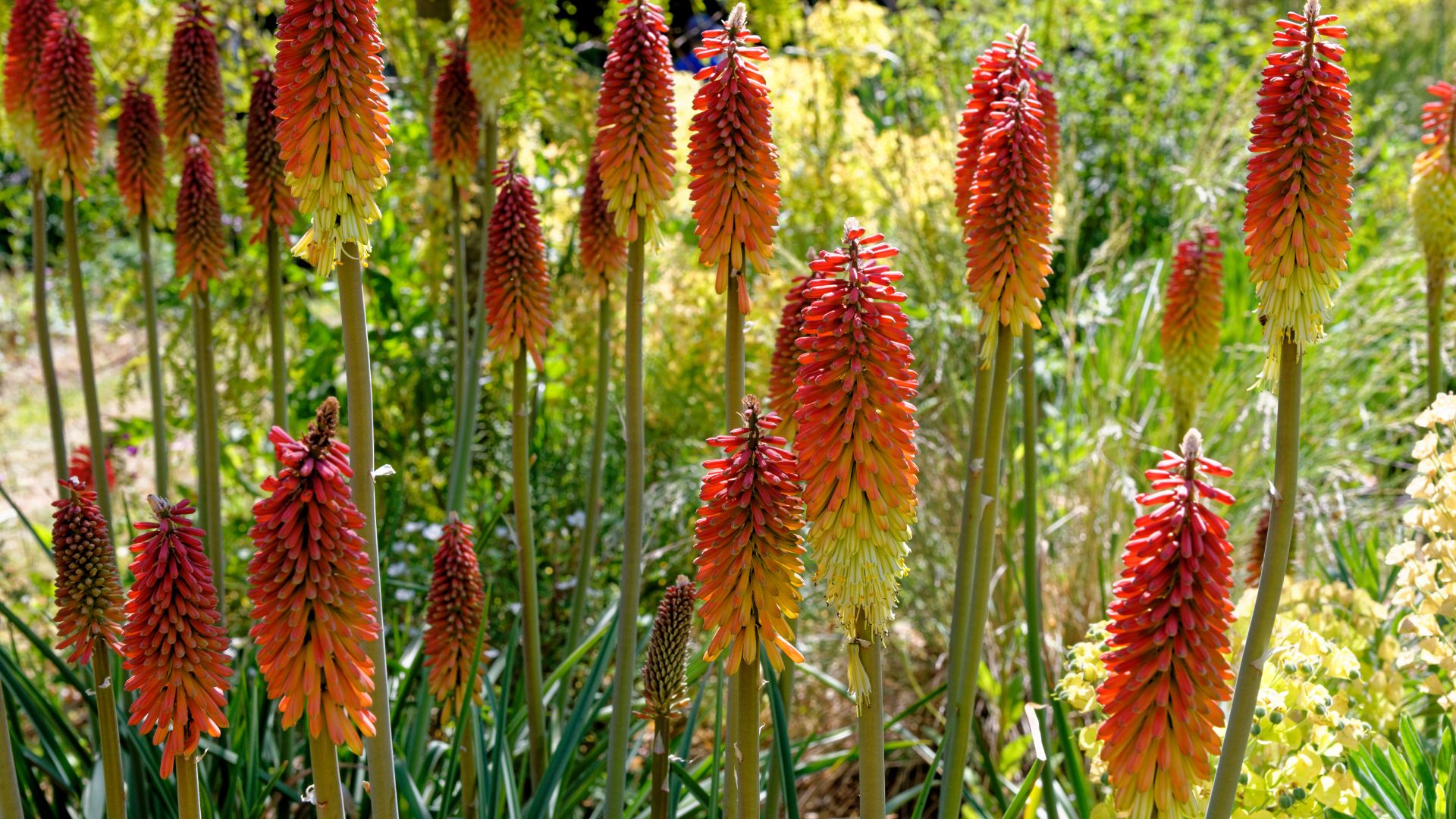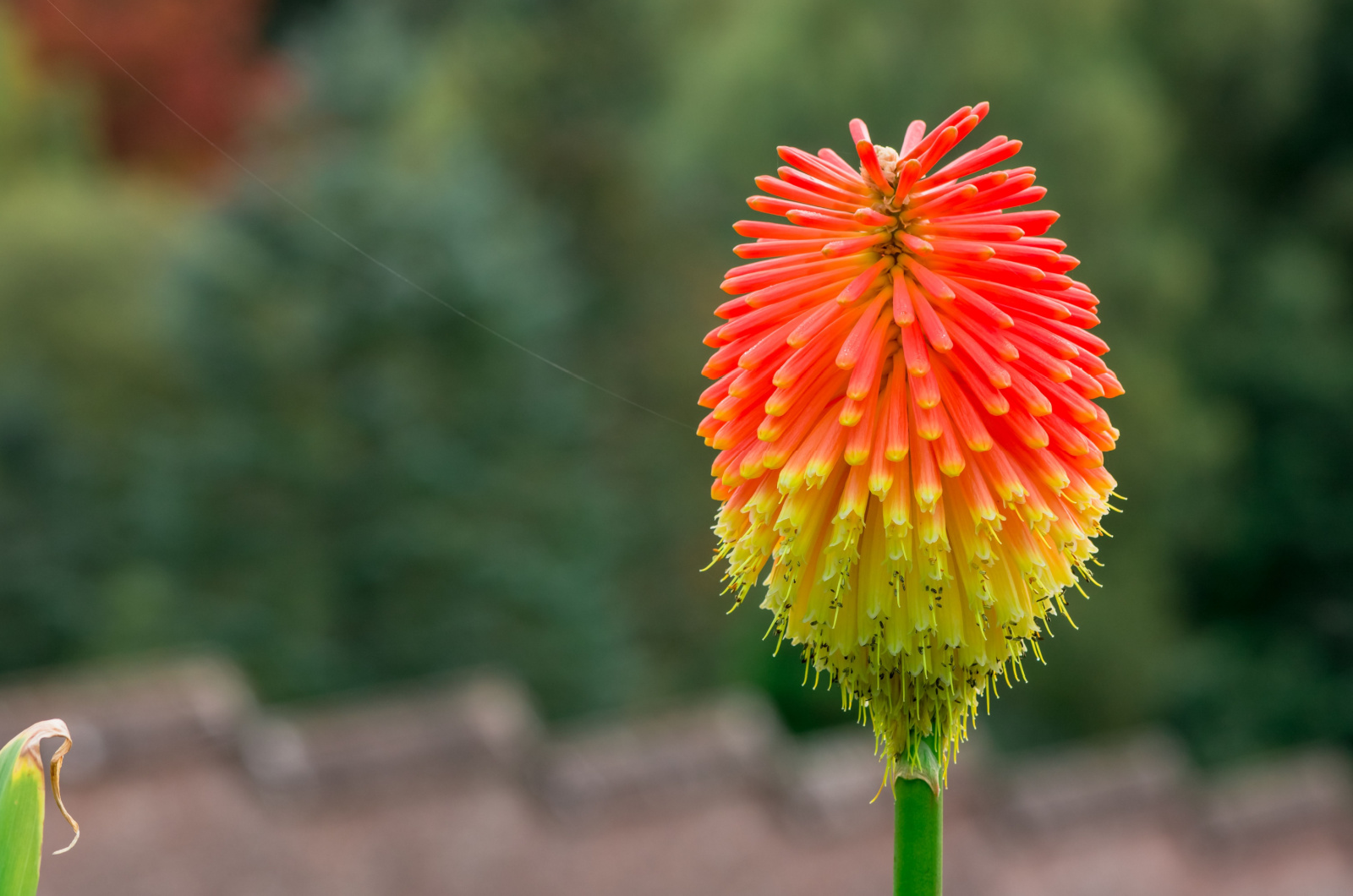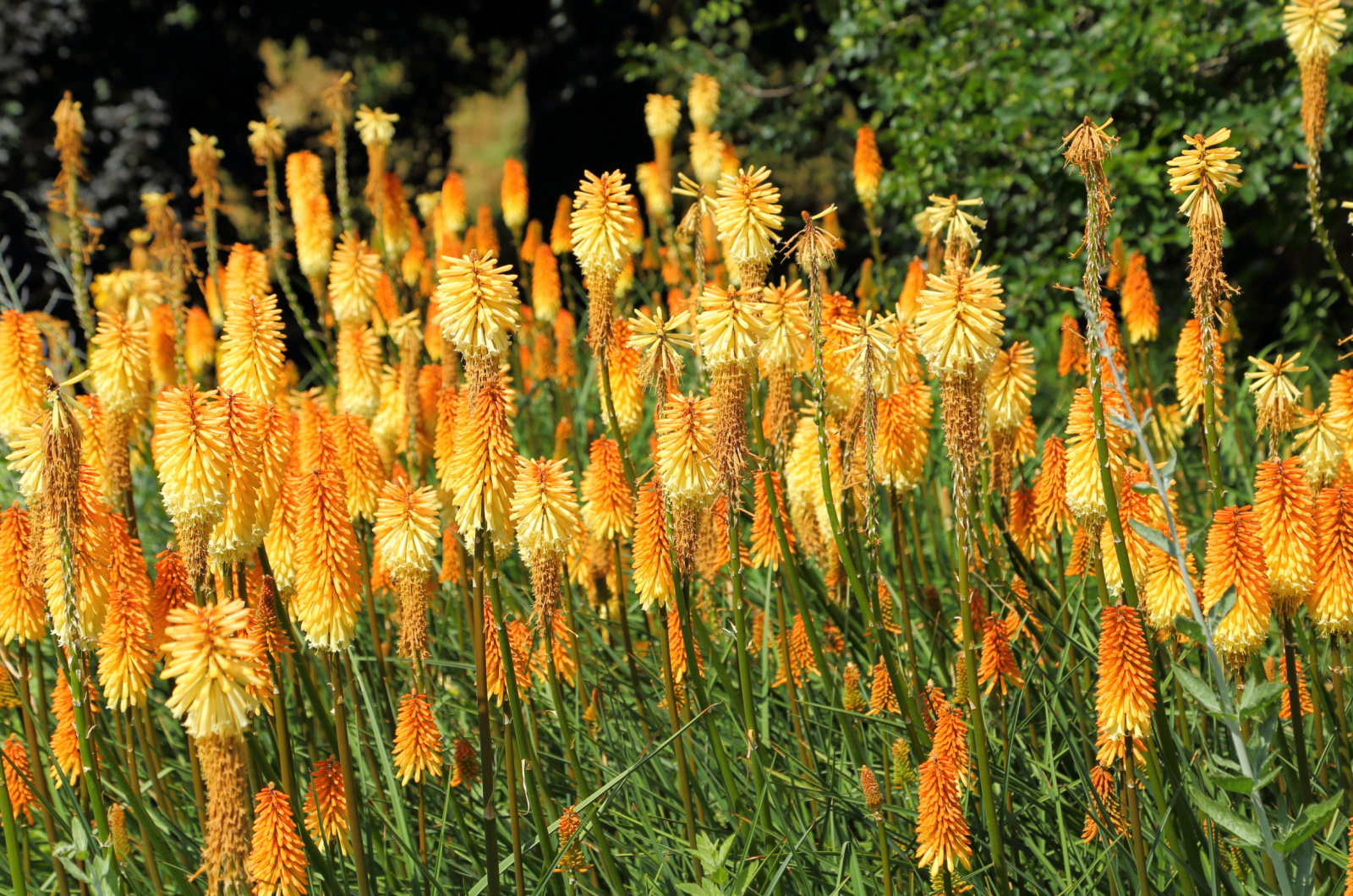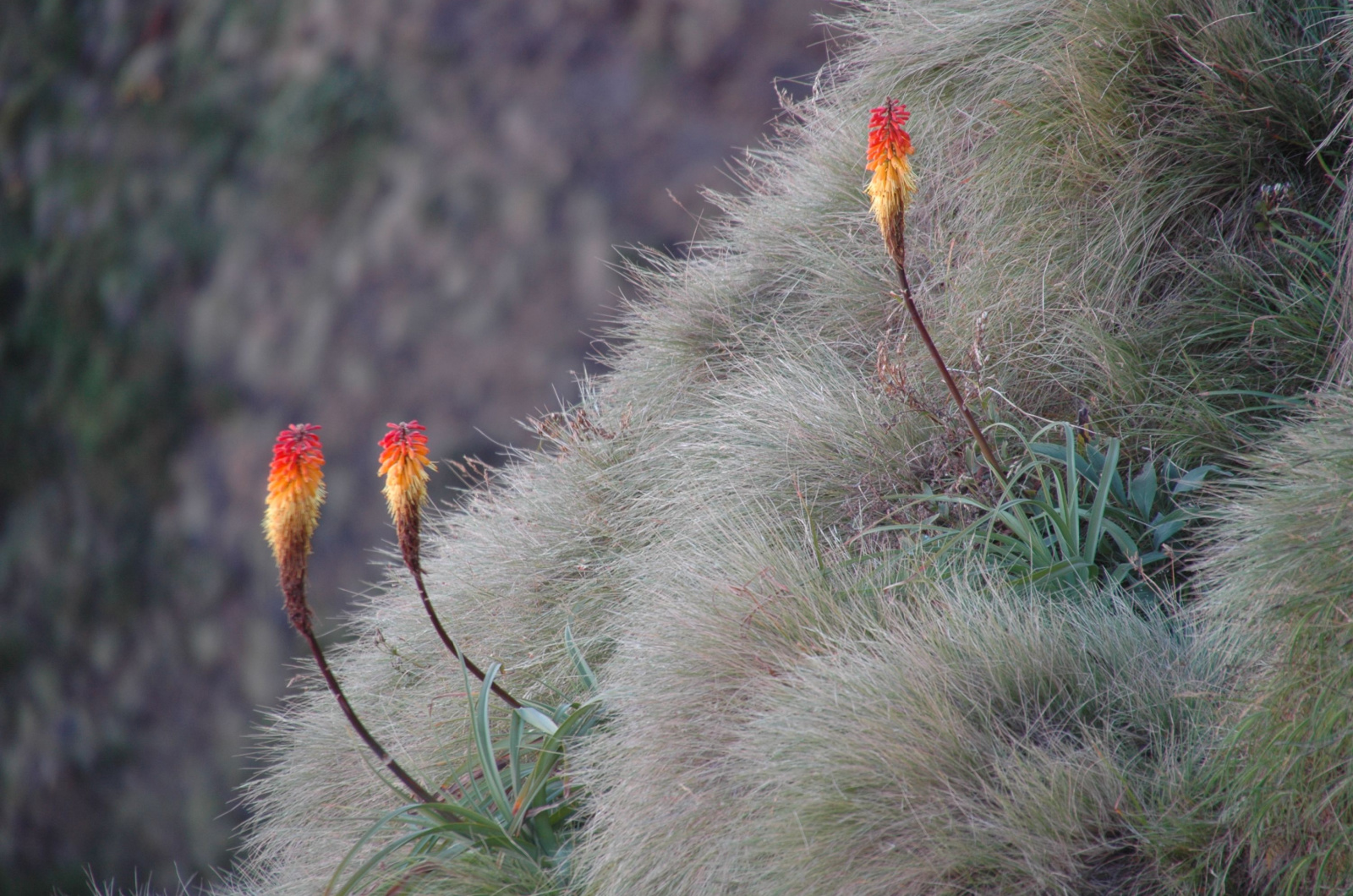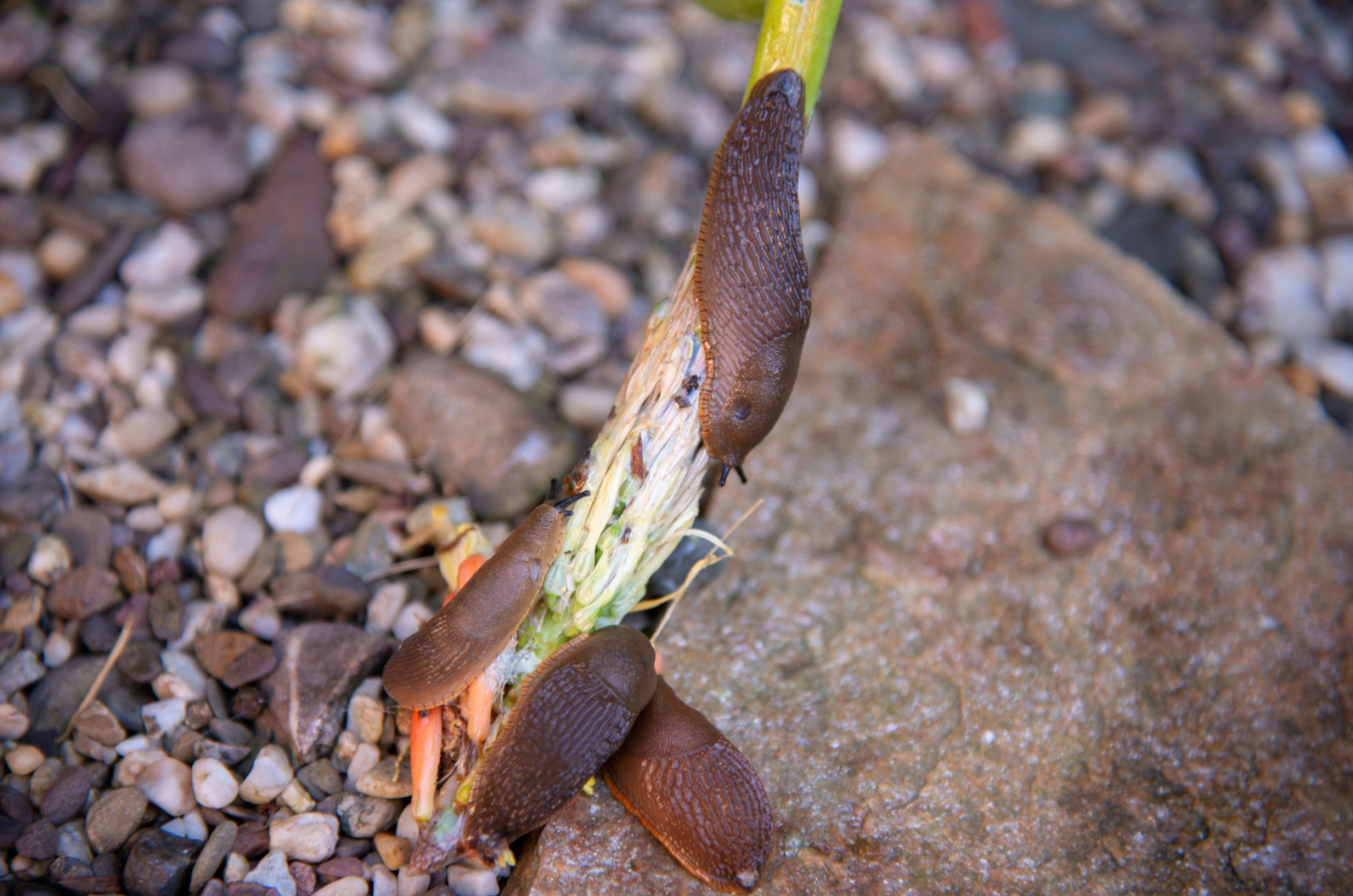Unleash the fiery beauty of the Torch lily in your yard!
The Torch lily, aka Red hot poker plant, is a dynamic perennial that produces torch-shaped blooms, hence the name. These flowers look like little fireworks and cast a warm and captivating glow across the garden.
What’s also great is that you only need a root to get started and, before you know it, you will have little flames standing out among the greenery.
In this article, we are going to teach you how to plant a new torch lily and also share some care tips to grow a happy and healthy plant. Stay tuned!
How To Plant A New Torch Lily
When planting Torch lilies, there are a few things you need to take into consideration. The first thing is sun exposure – find a place where your new plant can receive at least 6 hours of sunlight during the day.
Next, soil requirements. These lilies thrive in well-draining and fertile soil, so make sure to add some compost or organic matter before planting. Dig out a hole that is twice as wide as the plant’s root ball so that their roots can spread comfortably.
To boost root growth, you can trim some longer or dead roots before putting them in the hole. Then, carefully put the plant in the hole and make sure that the crown is at soil level. Backfill the hole with the rest of the prepared soil.
After you’ve successfully planted your Torch lily, it’s time to give it a thorough watering and add some mulch around its base. Once the plant starts growing, don’t forget to add some fertilizer (all-purpose or organic fertilizer works just fine).
You might find interesting: 3 Tips You Need For Successful Lasagna Bulb Planting
How To Care For The Torch Lily
Now is the time to take good care of your Torch lily. Although they might look high-maintenance, these plants are super easy to take care of!
We are going to discuss their plant care in more detail, so keep reading.
Soil Requirements
While Torch lilies can adapt to various soil types, it is important that the soil drains well. Proper drainage is crucial because the soil should be kept moist and not soggy throughout the growing season.
Light Requirements
Torch lilies like a lot of sunlight. They should ideally receive between 6 to 8 hours of direct sunlight, although they can adapt to some filtered sunlight. In fact, they should be placed in indirect sunlight during hot summer days if they are grown in containers.
When growing Torch lilies indoors, make sure to put them near a south-facing window. This way, your indoor lily will receive enough sunlight to grow and bloom without getting sunburn.
Water Requirements
Torch lilies don’t need too much watering otherwise they’ll lose their flames!
These are generally drought-tolerant plants that should receive an average watering during the growing season. Give them about an inch of water during spring and summer. Avoid overhead watering because it can lead to fungal diseases.
Water your Torch lily more frequently during hot and dry periods in the summer. Feel the soil before each watering session – if it is dry, then you should water it. If not, skip watering for a few days.
Torch lilies enter dormancy in the winter season. During this time, you should reduce watering or stop it altogether. Overwatering might lead to root rot, which is a deadly fungal disease that can completely ruin your lilies.
Fertilizer Requirements
Even Red hot poker plants can benefit from some plant food. Use balanced fertilizer and apply it once every two weeks during the growing season. This will encourage new growth and flowering.
Avoid adding any fertilizer during the plant’s dormant stage because it is not actively growing so it doesn’t need any extra nutrients. Too frequent fertilization can lead to salt buildup and stunted growth.
Propagation
It is necessary to divide your Torch lilies because they might get overcrowded, which usually leads to reduced flowering and poor general plant health. Divide the plant in late spring and early summer.
When you do this, you will create multiple smaller plants. However, the trick is to do it properly – simply dig up the plant and separate roots into sections. Make sure that each section has three or four small buds or shoots.
Once you do this, replant the sections in well-draining soil at a similar depth as the root ball. Water thoroughly right afterwards.
Divided Torch lilies won’t immediately bloom as abundantly as the mature plants, which is why you should be patient and provide your new plants with the best possible conditions!
Frost Protection
Torch lilies are perennials that can grow just fine in USDA zones 5 through 9. Since they originate from South Africa, they’ve adapted to hot summers and mild winters.
If you live in an area with harsh winters, you can either grow your Torch lily as an annual or simply put it in a container that you can bring indoors once the temperatures drop.
Surprisingly, their flame won’t be dimmed by slight periods of frost – these hardy plants can even tolerate some freezing temperatures. However, if you want to keep them happy and healthy, you should provide them some protection from frost.
What you can do is add a layer of mulch or cover them with a blanket or plastic sheet during the night. This is usually done once the temperatures are below 32 degrees Fahrenheit.
Also read: The Best Way To Keep Your Daylily Plants Looking Neat After They’re Done Flowering
Pests
Mealybugs, spider mites, whiteflies, scales, thrips, nematodes, and aphids are the most common pests that attack Torch lilies. If you notice that your plant is looking strange, immediately look for pest infestation.
If you notice honeydew residues and small bugs crawling, you are probably dealing with aphids. Small webbing is a sign of spider mite infestation, while scales attach themselves to the stems and leaves and suck the sap out of your lily.
Nematodes are hard to spot because they feed on plant roots. Mealybugs are tiny, white pests that settle on the undersides of the leaves, while whiteflies fly around the plant and walk all over it.
Remove any pests as soon as possible – you can use neem oil or insecticidal soap. I would recommend you to isolate the plant in order to prevent pests spreading to your other plants.
The best way to prevent pest infestations is by keeping your plant in top-notch health!
Plant Diseases
Although the Torch lily is a relatively hardy plant that can endure different growing conditions; it can still be vulnerable to various plant diseases. The trickiest one is powdery mildew, which is a fungal disease that leaves white patches on the leaves.
If you don’t treat it, it can cause severe damage to the leaves and the plant’s health. Remove any affected leaves and apply fungicide in case of a severe infection.
We’ve already mentioned root rot, but other diseases can also affect your plant, including stem rot, crown rot, rust, and southern blight. Dark lesions on the stem are a sign of crown rot, while cankers on the stem are caused by stem rot.
Yellow leaves and decaying roots are the result of root rot, which can completely ruin the plant if left untreated. Yellowing of the leaves is also caused by southern blight, in addition to decay at soil level. Orange-brown spots that look like rust indicate rust infection.
These plant diseases can be easily prevented if you take good care of your Torch lily. Remember to remove dead foliage and debris, water moderately, and provide proper air circulation by pruning.
You might find useful: Here’s How To Spot And Treat Summer Plant Diseases

